
The Trek in a snapshot

Trek Planner Maps

Parking: 39.12352, -110.69385
Information Kiosk: 39.12328, -110.6942
Outhouse: 39.1236, -110.69372

Experience. Discover. Explore.
Follow along on our adventure then go out on your own!




*Do not touch the rock art*

This is a very easy adventure to see some of Utah’s best rock art! Right from the parking lot you can see just about everything. There is a very short loop trail around the entire panel and it won’t take you more than a few minutes if you are in a hurry. You will see both petroglyphs and pictographs on this large panel. I stayed for about 1/2 hour during one visit and there seemed to be a steady stream of visitors who would come for a few minutes and leave.
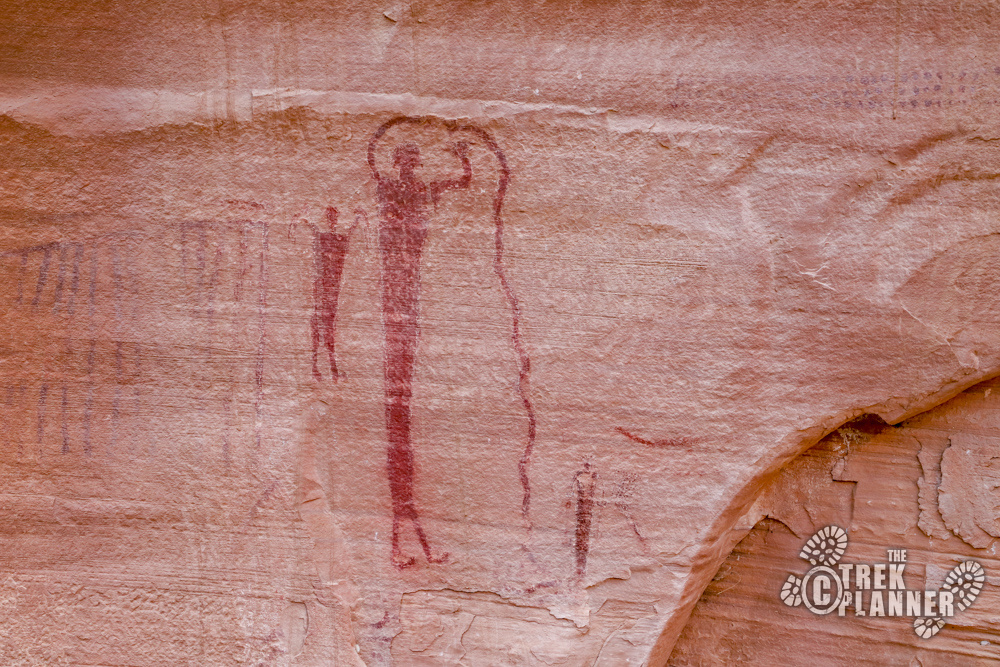

You will see many different types of rock art here but it’s generally believed that this style of drawing/painting is of the Barrier Canyon Style. Barrier Canyon (currently named Horseshoe Canyon) is on the western edge of Canyonlands National Park. Long limbless bodies with hollow eyes and heads with antennae or horns is typical with this style and it is prevalent at Buckhorn Wash.
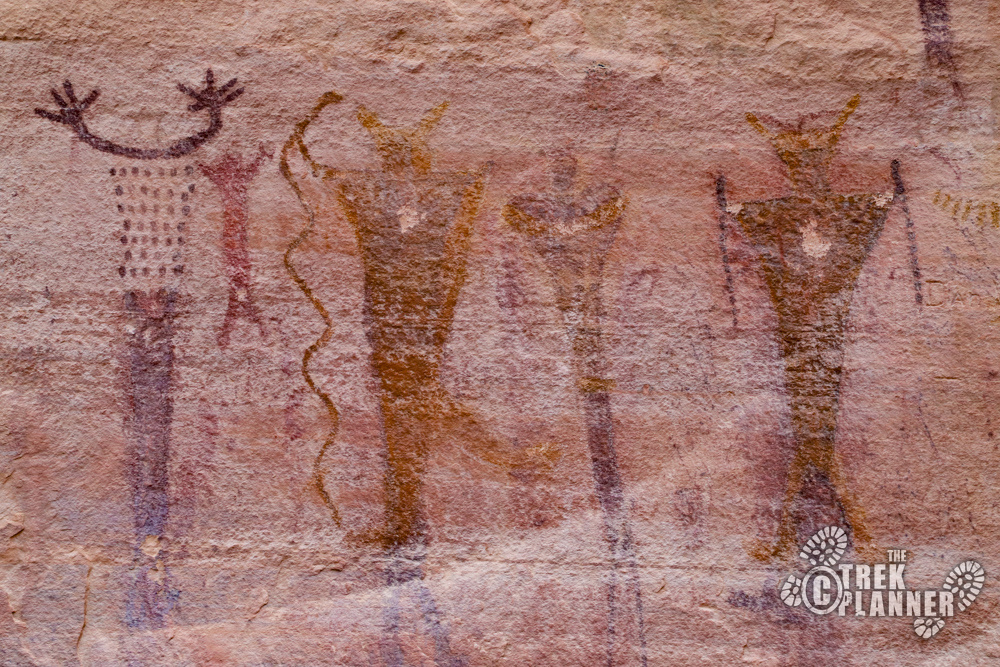



The pictographs on this panel are very large and detailed with many different colors. As you walk down on the trail you will probably notice some figures that appear to be angels with wings. This is a very rare type of pictograph, but you can see another example of an angel at the High Gallery at Horseshoe Canyon. What do you think the angels mean? Some people believe they are “rain angels”. We have lost almost all meaning of ancient rock art, but it’s fun to think about.


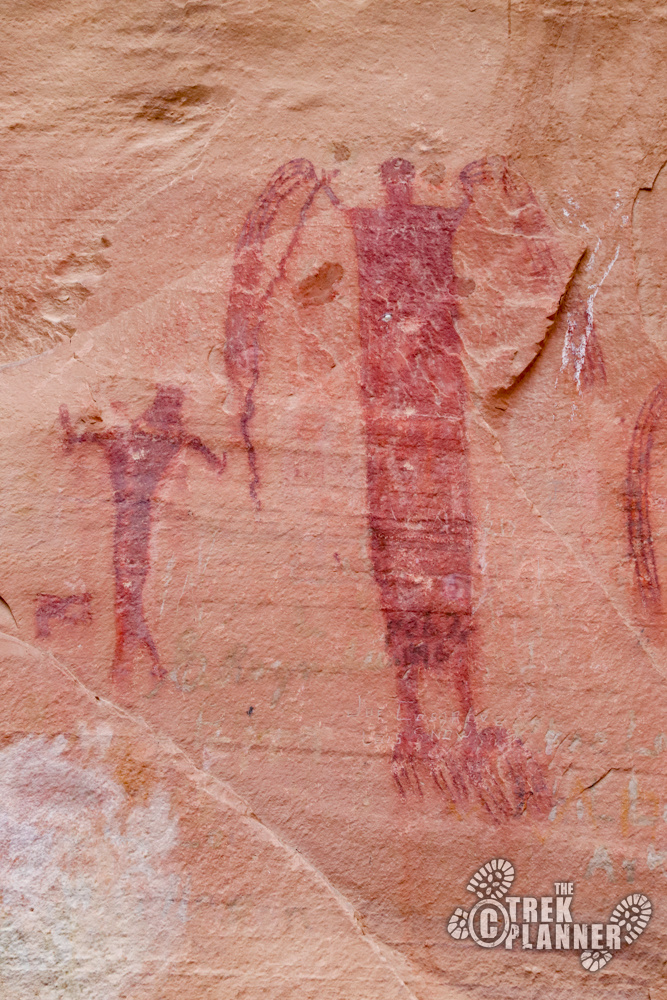

There are figures holding snakes or reaching out to depictions of animals and symbols. There is also a spiral with the tail end of it is of an animal head. I’ve seen this before in 9 Mile Canyon and at other places around Utah.
At the parking area there is a spot to get paper guides. I grabbed one and this is what it says:
The Buckhorn Wash Pictograph Panel is believed to be the work of the Barrier Canyon Culture (BCC) about 2,000 years and older. It predates the Fremont. The Barrier Canyon People did not have pottery. They hunted and gathered and used stone and bone tools, and atlatls.
Distinctive features of the BCC rock art: life-sized anthropomorphic figures, without arms or legs; broad shoulders, tapered trunks, and bug eyes; dots, rays, and crowns above heads; figures accompanied by birds, insects, snakes, and dogs.
Current Interpretation: What you see may be “pictures of shamans experiencing symbolic death and at times transformations, probably into a supernatural or animal form…” (Schaafsma, 1986)
The birds, insects, snakes, and dogs depicted on the panel are well known for their powerful associations as spirit helpers. They enable the ecstatic journey of the healer to the sky and beyond or to the underworld.
Pictographs: are painted on the surface of the rock with natural pigments. Black was made from yellow ochre, pinyon gum, and sumac. When stirred together they form a black powder. Reds were made from red ochre and the roots of mountain mahogany. Rabbitbrush was the source for yellow. Likely binding agents were plant oils and animal fats.
Likely Tools: brushes made from human hair, dog hair, or yucca fibers; flint or other stone chisel and hammers, fingers, hollow bird bones filled with pigment; mouths – paint could be blown out the mouth and onto the rock creating a negative image often associated with handprints.Vandalism: Paint, chalk, carvings, and bullet holes were also present on the Buckhorn Panel. The canyon’s proximity to the Old Spanish Trail and its use as a hide-out for outlaws made the pictograph panel a prime target for vandals.
Sadly, much of the damage is permanent and we cannot “repaint” lost art. However, the Buckhorn Panel was greatly improved in 1995 through an intensive restoration effort.
The Restoration Project: was initiated by the citizens of Emery County, Utah as part of the 1996 Utah Centennial Celebration. This project was a joint effort of contributors and volunteers from local communities, BLM, State and County governments.
This pictograph panel is one of several in the U.S. which has been restored by Constance Silver, an internationally known art conservator. The clean-up took about six weeks at the site, after preliminary studies and lab tests.







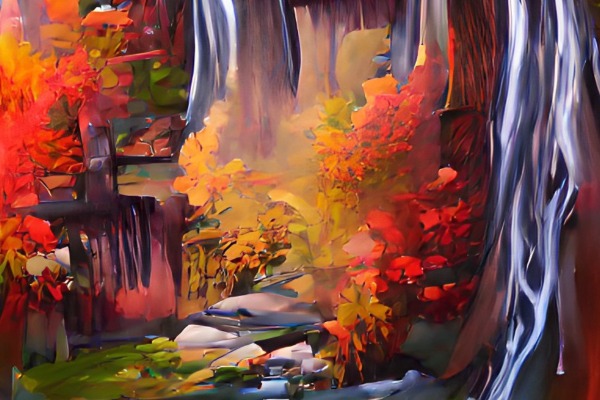
Personal Thoughts
This is an incredible stop that is worth driving hours to see. This is one of the best things to see along Buckhorn Draw. I recommend visiting early in the day or later in the afternoon when there isn't direct sunlight on the panel so you can see it better. I made the mistake of visiting at about 1pm in the summer and the harsh sunlight washed out the pictographs so I could hardly see the detail. I came back later in the afternoon and found my pictures looked much better.





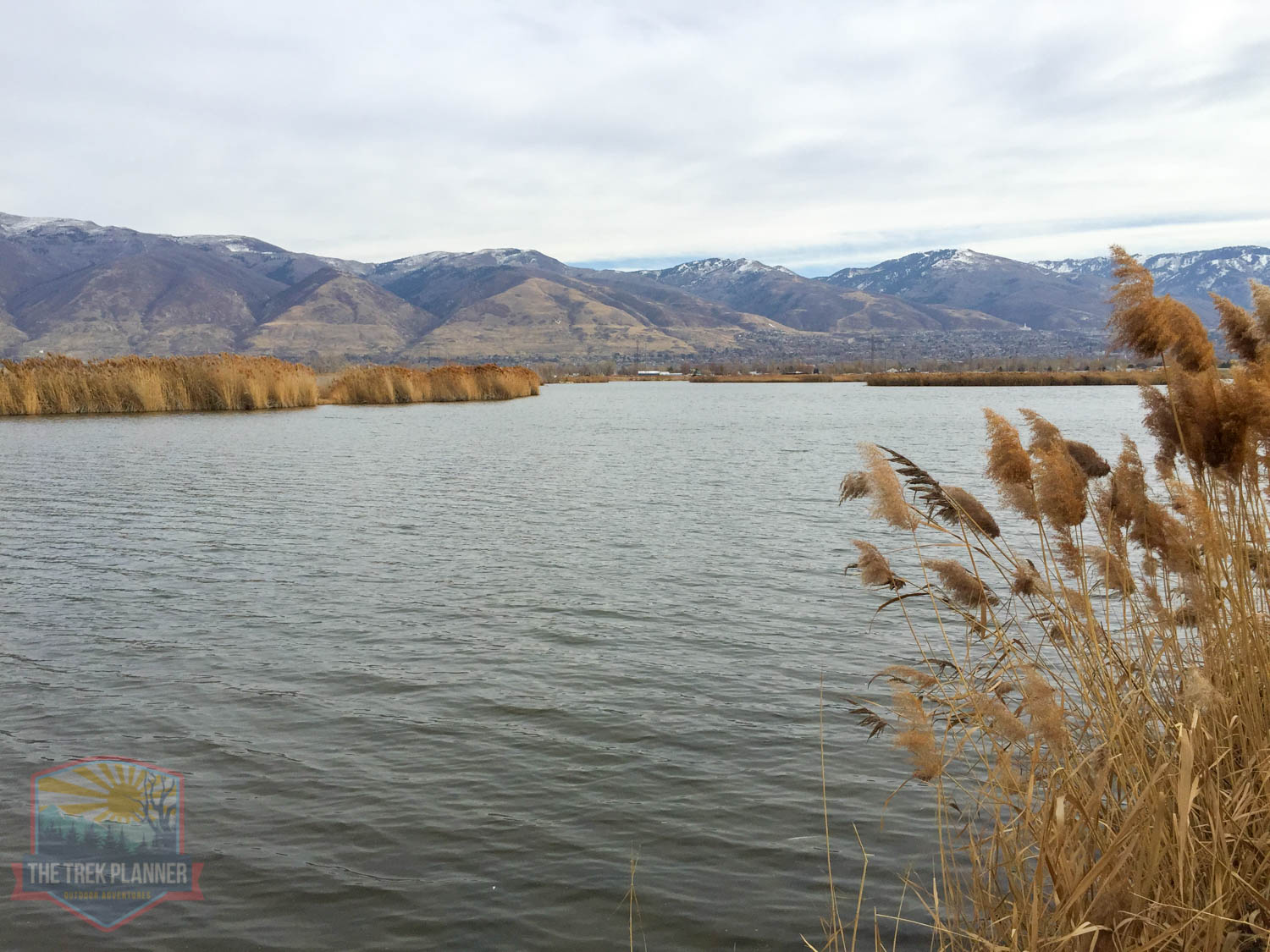
[…] Here are some pictures of my drive through the canyon! I of course stopped at the incredible Buckhorn Wash Pictograph Panel! […]